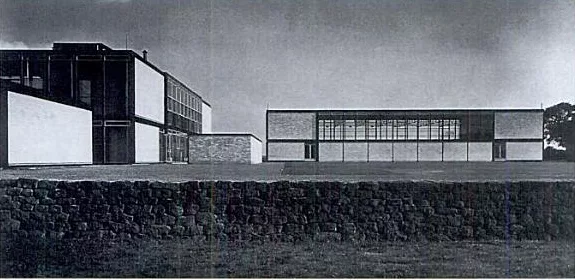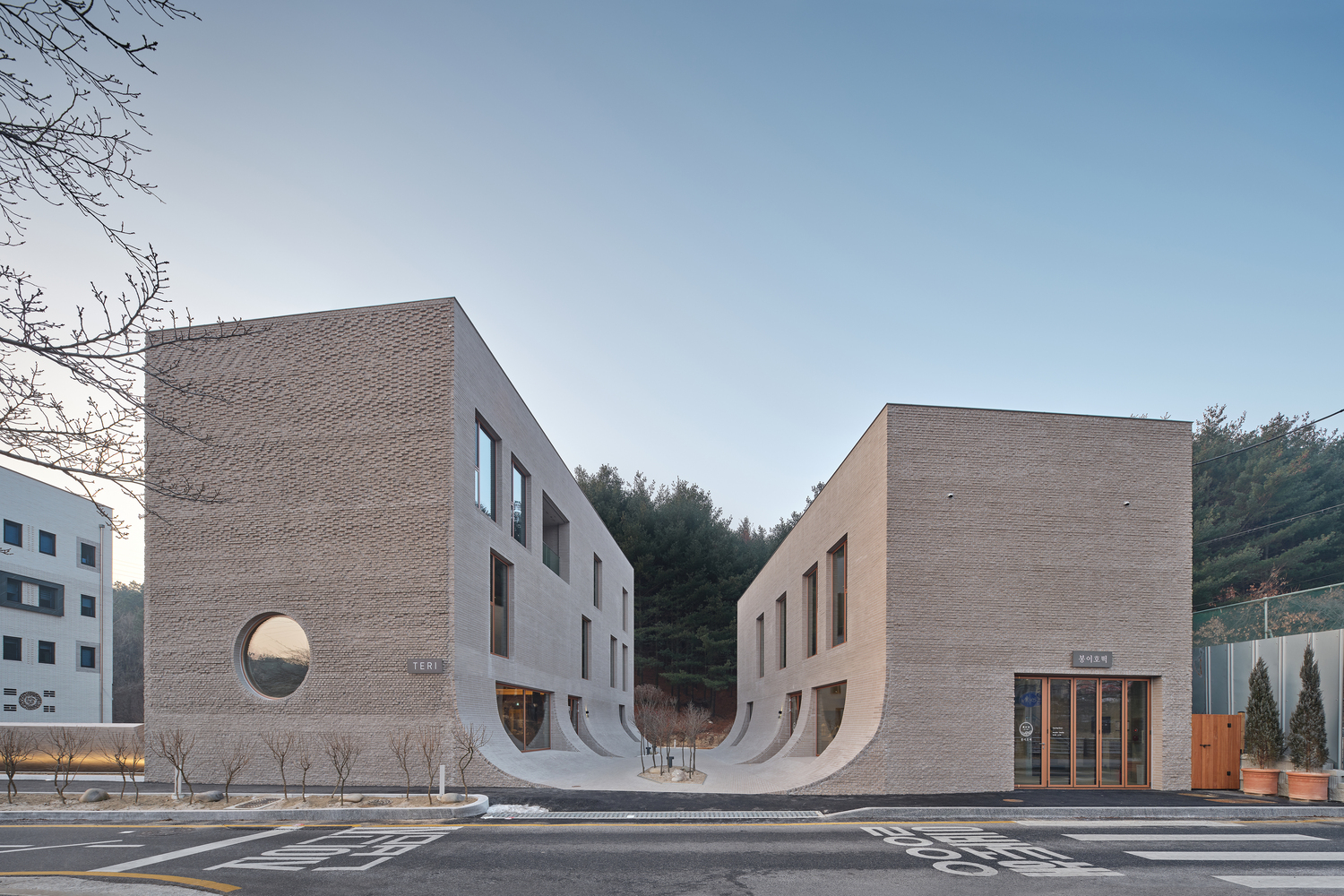Hunstanton School: Brutalism and How It First Began
Hunstanton School in Norfolk, England, is known as the first work to use the term “Brutalism” formally. It was designed by Alison and Peter Smithson who won the design competition in 1950. Everyone was surprised by the news because at that time Peter was only 26 while Alison was 21 and had just graduated from Durham University. They were considered children who were straight out of school and the client seemed to be taking a huge risk with hiring them.
 The winning design by Smithsons (cr: WikiArquitectura)
The winning design by Smithsons (cr: WikiArquitectura)
The school was built in the post-war period in England in response to the high demand for new buildings due to the war damage. There also was a large increase in population and very high birth rates have made education a priority. On the other hand, funds and building materials were also limited in that era. Therefore, schools had to be built immediately and cheaply.
 Post-war school design with limited funds and materials (cr: WikiArquitectura)
Post-war school design with limited funds and materials (cr: WikiArquitectura)
To that aim, the Hunstanton School was designed with formal clarity, leaving unnecessary things in favor of a modernist concept. Mies van der Rohe's work became Peter's inspiration in delivering simple, minimalist and functional designs. He also said that the form of the school is based on a careful study of educational needs and requirements.
 Minimalist and functional design (cr: WikiArquitectura)
Minimalist and functional design (cr: WikiArquitectura)
Brutalism developed after the emergence of modernism and both focuses on functionalism and rejection of ornamentation. Modernist architecture usually gives the impression of being made of glass when in fact it uses brick or concrete. Instead of emphasizing the simple look, the brutalists took things a step further by trying to stay true, more honest, and even cruder than the modernists. It is characterized by a focus on the use of raw unpolished material.
 Honest architecture with unpolished material (cr: WikiArquitectura)
Honest architecture with unpolished material (cr: WikiArquitectura)
The Smithsons constructed Hunstanton in the same way as it appears; materials such as glass, brick, and concrete. It reveals a more natural structure without finishing in the form of paint or wall plaster. This is a way to create the most honest form of architecture if we have to face limited funds and materials.
 The use of glass, brick, and concrete in brutalist design (cr: WikiArquitectura)
The use of glass, brick, and concrete in brutalist design (cr: WikiArquitectura)
 Straightforward design (cr: WikiArquitectura)
Straightforward design (cr: WikiArquitectura)
Apart from the flooding appreciation, applying brutalist to a school raised questions and criticism, both for the design and the architects. Would it be pleasant for the children to learn in a straightforward-shaped prison-like structure? Would the use of raw materials in school buildings not cause any discomfort? Would it be okay for young architects without any building experience to construct a vital educational facility? The critics continued and initiated many discourses that led to the further development of modern architecture.










Authentication required
You must log in to post a comment.
Log in